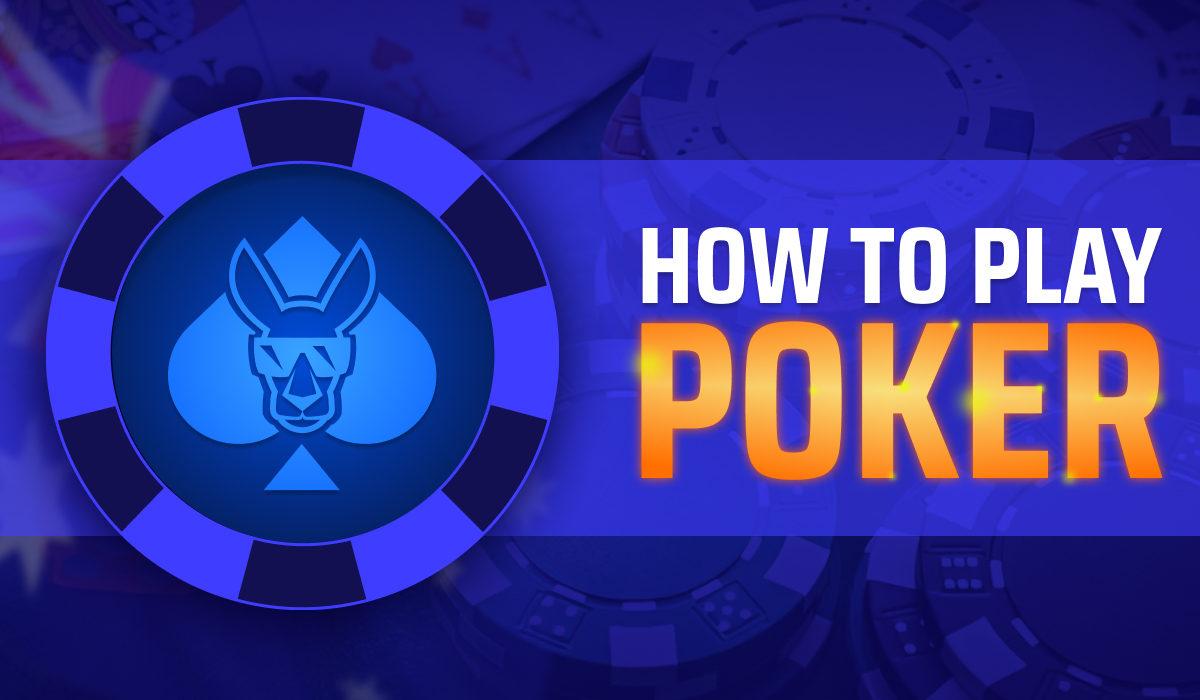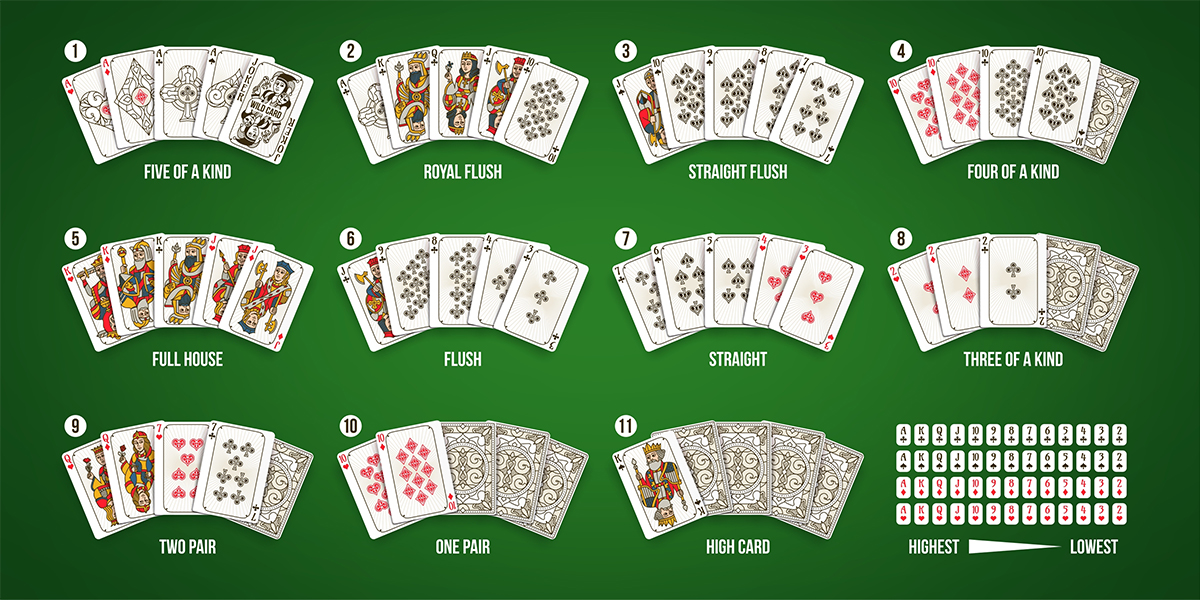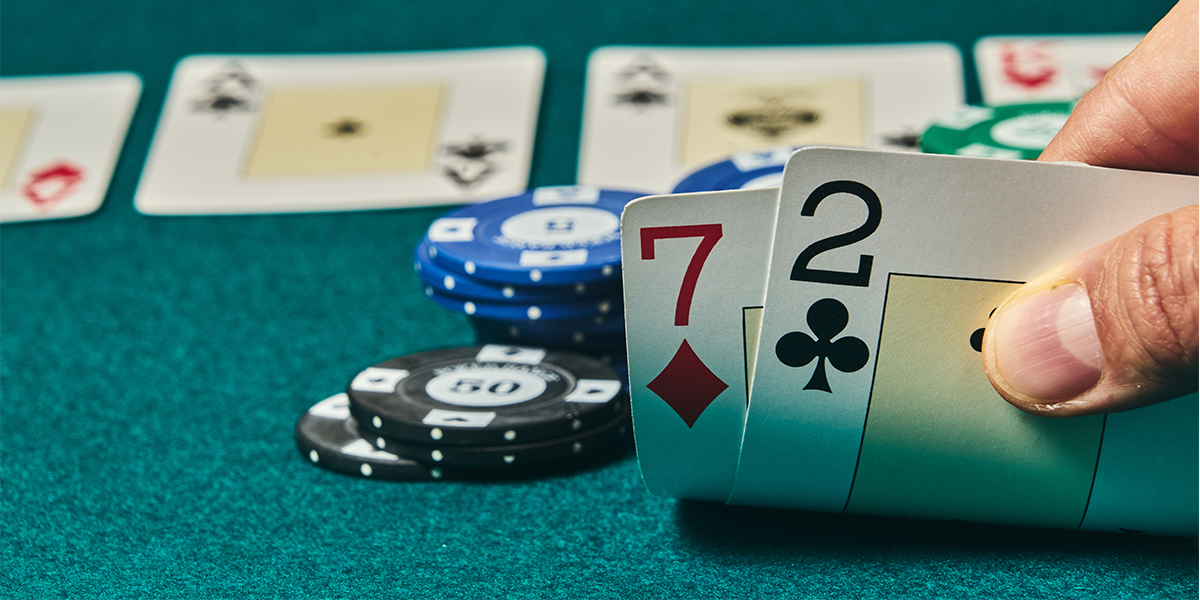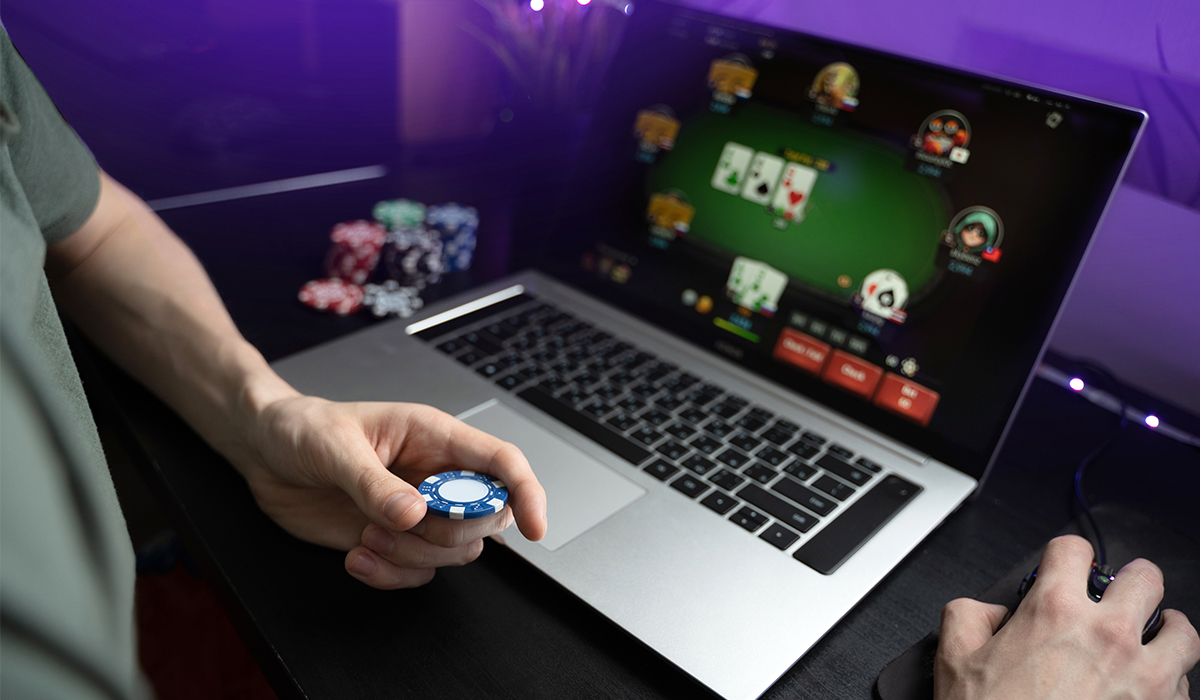How to Play Poker – Poker Rules, Strategies & Playing Style (For Beginners & Pro’s)

Hi, my name is Mike Waters – a seasoned poker professional with over 20 years of experience playing poker with my friends, at local cardrooms, in Vegas, and online. As one of the founders of AustralianGamblers.com, I have decided to write this guide to poker myself and help all newbies learn how to play and even professionals improve their skills.
Whether you’re completely new to the game or you’re a seasoned player looking to refine your strategy, this guide is for you.
I will take you through every step of the poker journey, starting with the rules and basics of Texas Hold’em, moving through intermediate strategies, and ending with advanced techniques and tournament tips.
I will also discuss a few key mental tips to keep you sharp at the table. By the time you’re done reading, you’ll be ready to take on any poker game – be it online or in person.
Let’s get you dealt in, shall we?
The Basics – How to Play Texas Hold’em
Let’s start with the version of poker everyone knows and loves: Texas Hold’em.
This is the form of poker you’ve likely seen in movies and TV shows (think Casino Royale’s scene where Bond gets a Royal Flush), and it’s the game played at most major tournaments, including the World Series of Poker.
The Objective
In Texas Hold’em, the goal is simple: make the best five-card hand using a combination of your two hole cards (dealt to you privately) and the five community cards (shared by all players).
Even if you don’t have the best hand, you can win by making the other players fold. That’s the magic of poker – sometimes, winning is more about what you make them believe than what you actually have.
The Hand Rankings
Before you even think about strategy, you need to learn the poker hand rankings. Here’s a quick rundown from the weakest to the strongest hand in poker:
- High card: No pairs, just the highest card.
- One pair: Two cards of the same rank.
- Two pairs: Two different pairs.
- Three of a kind: Three cards of the same rank.
- Straight: Five consecutive cards of any suit (e.g., 5-6-7-8-9).
- Flush: Five cards of the same suit (e.g., all hearts or all spades).
- Full house: Three of a kind plus a pair.
- Four of a kind: Four cards of the same rank.
- Straight flush: Five consecutive cards of the same suit.
Royal flush: A straight flush from 10 to Ace, the best possible hand.

How often can you get a Royal Flush? Well, your odds of getting one are around 1 in 30,000. In all my life, I’ve hit a royal flush 3 or 4 times – and I’ve been playing for over 20 years.
The Flow of the Game
Each hand of poker follows a pattern, from the deal to the final showdown. Understanding how a hand plays out is essential so that you can understand when and where to make your move.
Pre-flop
Before any community cards are dealt, each player is given two private cards. This is when the first betting round begins.
During this round, you can either fold, call (match the big blind), or raise (increase the bet). New players often fall into the trap of calling too much with weak hands like 7-4 off-suit (called limping).
Here’s a rule of thumb: if your hole cards aren’t solid (like pocket pairs or strong suited connectors), don’t be afraid to fold. Poker is a marathon, not a sprint.
The Flop
After the first round of betting, three community cards are dealt face up. These cards are called “the flop.”
Now you’re combining these cards with your hole cards to make the best five-card hand possible, at which point another round of betting takes place.
If you’ve hit a strong hand (like two pairs or a flush draw), this is a good time to start betting more aggressively to show the rest of the table that you’re strong – with the aim of the ones looking for a free check to fold.
The Turn
A fourth community card, known as the turn, is dealt face up. You now have six cards to choose from when building your five-card hand. The third round of betting occurs here.
It’s essential to know your hand’s strength at this point – as well as the odds of improving. If you’re drawing to a flush or straight, now is the time to consider whether the pot odds justify a call or if it’s better to fold and wait for a stronger position.
The River
The fifth and final community card is called the river. After this card is revealed, the final betting round starts.
If you’re still in the hand, this is where things get real (unless everyone has bricks and it’s just check). If you’ve got a strong hand, now’s the time to extract value by betting big – or sometimes betting a smaller amount so that you can bluff that you have a weak hand.
If you’re bluffing, this is your last chance to push your opponents out of the pot.
The Showdown
Once all betting rounds are complete, any remaining players must show their hands.
The player with the best five-card combination wins the pot. Bluffing comes to light here, and if your opponents folded earlier, you won’t even need to show your cards—a win’s a win, regardless.
Basic Strategy for New Players
Poker isn’t just about luck—it’s about making the right decisions at the right time. Here are some beginner-friendly strategies to get you started at Australian poker sites.
Play Tight
One of the biggest mistakes beginners make is playing too many hands. Tight play means only getting involved with strong hands, especially in early position (when you act before others in the betting round).
In poker, patience is key. Focus on playing hands like strong Aces (Ace-King, Ace-Queen), high pocket pairs (10s through Aces), and suited connectors (cards like 9-10 of hearts that can make straights and flushes).
Bet Aggressively
Once you’re in a hand with a strong starting hand, bet aggressively. The biggest mistake beginners make is being too passive.
This allows other players to stay in the hand cheaply and possibly outdraw you on later streets. Remember, a good hand pre-flop is worthless if you let others see the flop for free.
You may think that your pocket Aces are amazing and that you’ll extract the most value by pulling someone into a trap – but in many cases, you’ll set that trap for yourself as they’ll outdraw you. So, strong hands = bet aggressively.
Intermediate Strategy – When to Raise, Bluff, and Fold
Once you’ve got a solid understanding of the rules and basic strategy, it’s time to up your game by learning some more intermediate techniques.
Know When to Bluff
Bluffing is an art form in poker. The key is to know when to bluff and, more importantly, when not to.
A good rule of thumb is to bluff when the board is scary—meaning there are high cards or possible straights or flushes (and when there are no other aggressors showing strong hands).
If the flop comes down King-Queen-Jack, and you’ve got nothing, but your opponent seems nervous or is betting small, this could be an excellent time to represent a strong hand. Just be careful not to overdo it; experienced players can sniff out a constant bluffer quickly.

Continuation Betting (C-betting)
A continuation bet is when you raise before the flop and then bet again on the flop, regardless of whether you’ve improved your hand.
This keeps the pressure on your opponents and forces them to make tough decisions. If you raised with Ace-King preflop and the flop comes down 10-5-2, even if you haven’t hit a pair, a C-bet could still win the hand by forcing weaker hands to fold.
This is a strong tactic when playing from the button position (more on that below).
Position, Position, Position!
Position is one of the most critical factors in poker. The later you act in a betting round, the more information you have about your opponents’ hands.
If you’re on the button (last to act), you have the advantage of seeing what everyone else does before making your play. This allows you to play a wider range of hands and bluff more effectively. In contrast, if you’re in an early position, play cautiously with only the best hands.
Pot Odds and Implied Odds
Understanding pot odds is crucial for making profitable calls, especially when you’re on a draw (like a flush or straight draw).
Pot odds are the ratio of the current size of the pot to the cost of a contemplated call. If the pot is $100 and your opponent bets $20, the pot odds are 5:1. If your chance of completing your hand is higher than that ratio, calling is a good idea.
Pro tip: Combine pot odds with implied odds—the potential winnings if you complete your draw and your opponent continues betting.
Advanced Strategy For Seasoned Players
Reading Your Opponents
One of the most advanced skills in poker is reading your opponents. This goes beyond watching for physical “tells” (like shaking hands or nervous ticks).
Pay attention to their betting patterns. Do they always bet big with strong hands? Do they check often when they’re weak? These tendencies can give you vital clues about what they’re holding, giving you information that can use you to adjust your strategy accordingly.
Floating the Flop
“Floating” is a technique where you call a bet on the flop with a weak hand, intending to bluff on later streets.
This works best against aggressive players who make C-bets often but tend to back off on the turn or river. If you call their bet on the flop, they may interpret it as strength and fold to your bluff on the turn or river.
Double Barreling
If your first bluff (C-bet) doesn’t push your opponent out, consider double barreling—betting again on the turn.
This shows serious strength and can be enough to scare off opponents who were hoping to hit a draw. However, use this strategy wisely. If you consistently double-barrel, opponents will catch on and start calling you down with weak hands.
Mental Game – Handling Tilt and Bad Beats
Managing Your Emotions
Poker is as much a mental game as it is a physical one.
Tilt—letting emotions dictate your play—can ruin even the best players. If you suffer a bad beat (something like losing with a full house to quads), it’s essential to stay composed.
Take a deep breath, remind yourself that poker is a long-term game, and don’t chase losses by playing recklessly.
Dealing with Bad Beats
You will inevitably face bad beats.
Picture this: you have pocket Aces, and your opponent has 8-9 suited. The flop comes down Jack-7-4, and they need a 10 to make a straight. Boom, the 10 hits on the river, and your pocket Aces go down in flames.
You can’t even fathom the number of times that I’ve been on both ends (so, going back to before, ALWAYS play your aces strong so you don’t get called with an 8-9)
It hurts, but that’s poker. Learning to accept bad beats as part of the game will help you keep your cool and focus on making the best possible decisions moving forward.
Interested in other table games? Check our guide to learn how to play blackjack (for beginners).
Guide to Playing Poker Tournaments Effectively

It’s time to talk a bit about poker tournaments – my personal favourites and the place where real money is made.
Let’s start with the basics first.
Poker tournaments are thrilling, high-stakes games where the goal is simple: to be the last player standing. Whether you’re playing online or live, understanding the key strategies can greatly improve your chances of success.
Understanding the Tournament Structure
A poker tournament is like a battle royale: you start with a fixed number of chips, and the goal is to eliminate your opponents by winning hands.
As the game progresses, the blinds (forced bets) increase, which pushes players to take more risks. The prize pool is distributed among the top 10-15% of players, with higher positions earning more money.
For instance, if you finish in the top 5% of a tournament, your winnings will be significantly higher than someone finishing in the 10th percentile.
In most tournaments, you don’t need to be the last player standing to make money, but the closer you get to the final table, the larger the payouts.
Managing Your Stack – The Importance of Big Blinds
Your chip stack is crucial in tournament play, and the number of big blinds you have is the most important metric to track (most tournaments usually start you off with 100 or 200 blinds).
For example, if you start with 20,000 chips and the big blind is 100, you have 200 big blinds, which is a healthy position.
However, as the blinds increase, this can quickly change. If the blinds rise to 400/800 and you still have 20,000 chips, you’re down to just 25 big blinds. This shrinking number forces more aggressive play, or you risk getting blinded out of the game.
Tournament Types – Regular, Turbo, and Hyper Turbo
There are three main types of poker tournaments: Regular, Turbo, and Hyper Turbo. Each has different blind level durations, affecting how aggressive you need to be.
- Regular Tournaments: Blind levels increase every 8-15 minutes, and you can start with up to 400 big blinds. These tournaments last anywhere from 3 to 8 hours, giving you time to observe opponents and build a stack slowly.
- Turbo Tournaments: The blinds increase every 5-6 minutes, so you’ll need to take more risks. You won’t have as much time to wait for premium hands, and aggressive play becomes more important.
- Hyper Turbo Tournaments: Blinds increase every 3 minutes, forcing rapid decisions. You may start with as few as 20 big blinds, and the tournament can be over in as little as an hour or two. You’ll often find yourself with 10 big blinds or less, needing to decide whether to fold or move all-in quickly.
Example: In a hyper-turbo tournament, you’re dealt King-Ten offsuit on the button, with only 11 big blinds left. The best move here is to push all-in. If you just call or make a small raise, one of the blinds could re-raise all-in, putting you in a difficult spot. By moving all-in, you have a chance to steal the blinds and antes uncontested, or potentially double up if you’re called.
Adjusting to Blinds and Antes
As blinds rise, antes (additional forced bets) are introduced, putting even more pressure on players. The faster these increase, the more aggressive you need to be to stay ahead of the curve.
In live tournaments, blinds may increase every 20 minutes to 2 hours, while online tournaments can have blind levels as short as 3 minutes. This is why it’s crucial to monitor the structure of the tournament and adjust your strategy as necessary.
Example: Let’s say you’re in a tournament where the blinds are 400/800, and there’s also a 100-chip ante from every player. This means that before any cards are dealt, there’s already a huge amount of chips in the pot. Short-stacked players are more likely to make aggressive moves, and you’ll need to take this into account when deciding whether to call, raise, or fold.
Late Registration and Re-Buy Strategy
Most poker tournaments offer late registration. While some players prefer to join from the start, others choose to join late, hoping to face fewer competitors who have already been eliminated.
The downside to late registration is starting with fewer big blinds. You’ll be entering as a short stack, making it difficult to build your chips without playing it riskier.
Many tournaments also allow re-buys or re-entries during the early levels. Once late registration closes, however, the tournament becomes a freeze-out, meaning once you’re eliminated, you can’t re-buy.
Example: If you join a tournament late and start with 20 big blinds while other players have larger stacks, your strategy must change. You’ll need to play more aggressively to stay competitive and avoid getting squeezed out by bigger stacks at the table.
All-in Decisions – Knowing When to Push
When your stack is low, knowing when to move all-in is essential.
If you’re down to fewer than 10 big blinds, folding and waiting for premium hands may not be an option. The key is to identify situations where going all-in has a good chance of success, either by forcing your opponents to fold or doubling your stack.
Example: You’re dealt Ace-Seven suited in a blind vs. blind scenario with 7 big blinds. Moving all-in here will almost always be your best move. You’ll put pressure on your opponent, and if they fold, you steal the blinds and antes. If they call, you still have a decent chance to win and double up.
Patience vs. Aggression – Adapting to Tournament Dynamics
In regular tournaments, you can afford to be patient, waiting for strong hands to build your stack.
However, in faster-paced tournaments like turbo or hyper-turbo, you’ll need to shift gears and become more aggressive to stay alive.
Ready to Play Poker Like a Pro? Keep Improving!
The best of the best never stop learning about poker.
Take time to review your hands, watch tournaments, read advanced poker strategy books, and discuss hands with fellow players when possible. Studying poker theory and reviewing your play is crucial if you want to climb the ranks and play with the best.
That’s it for my in-depth guide!
Now, whether you’re playing at an online casino or in a live poker room, you’ll be armed with the knowledge and strategies to hopefully start winning consistently. Remember: poker is a game of skill, patience, and discipline. The more you practice, the better you’ll become.
Nobody has become a poker genius overnight — I personally needed 6 years of continuous play to become profitable.
Thanks for reading!


